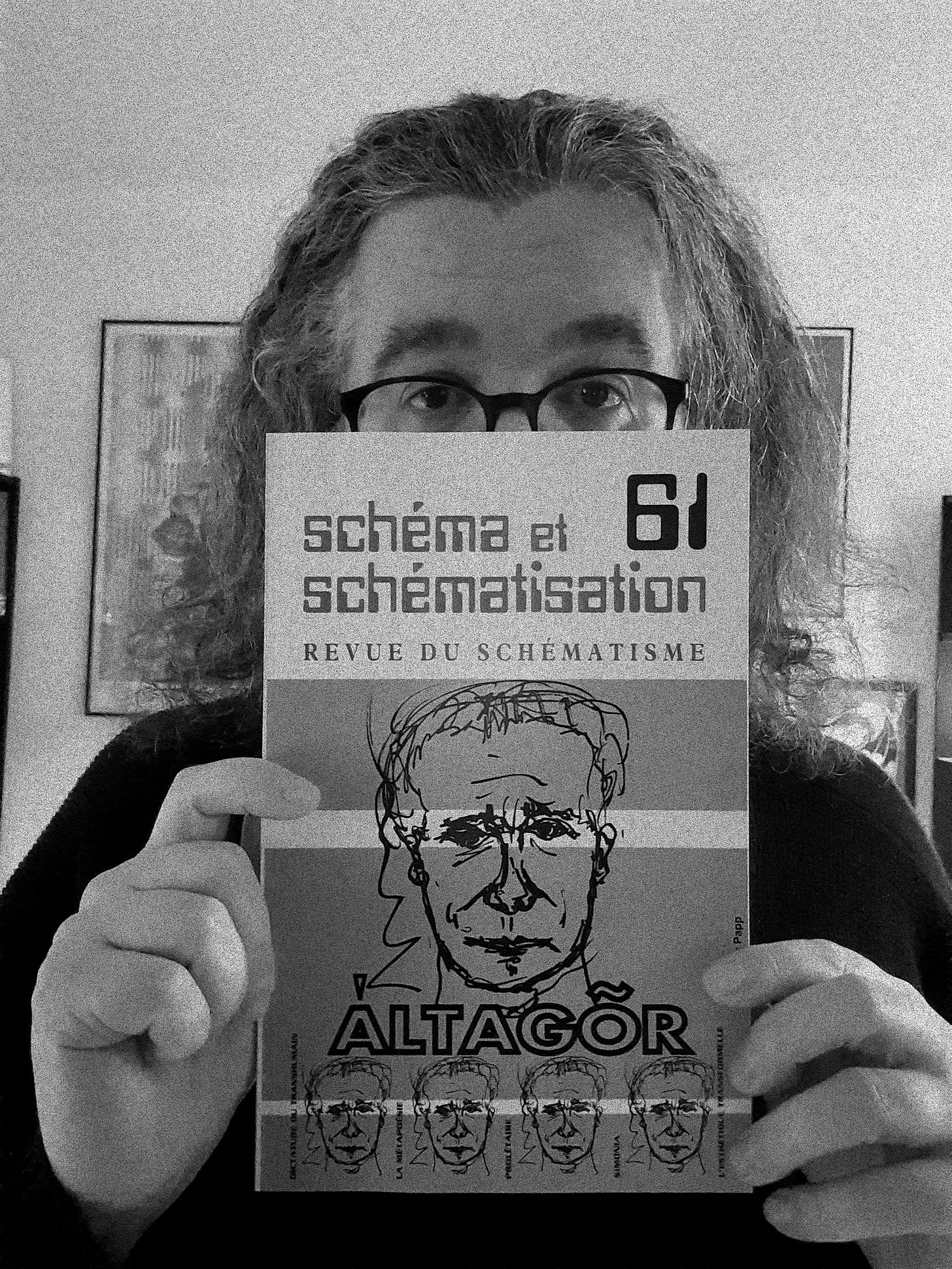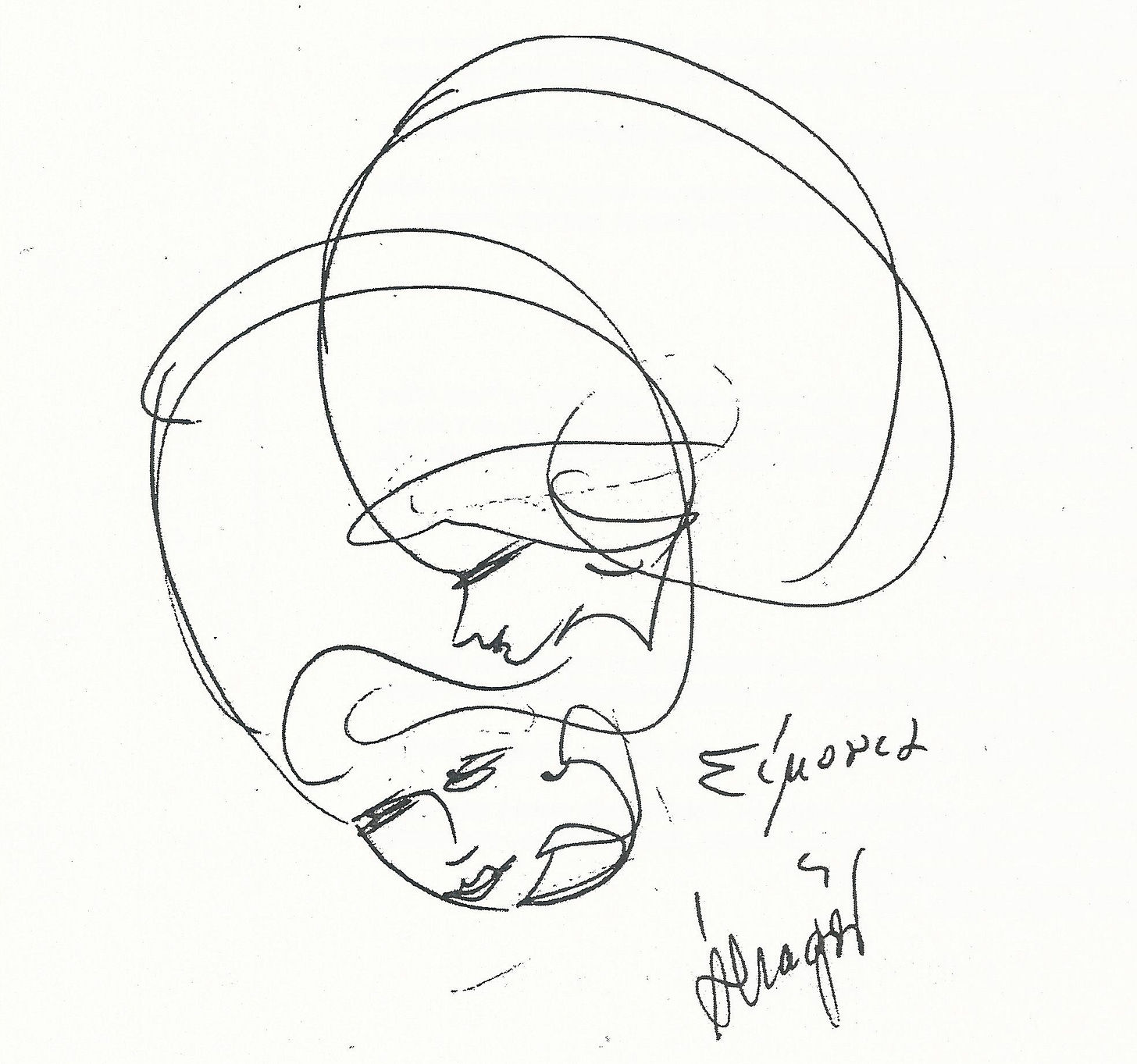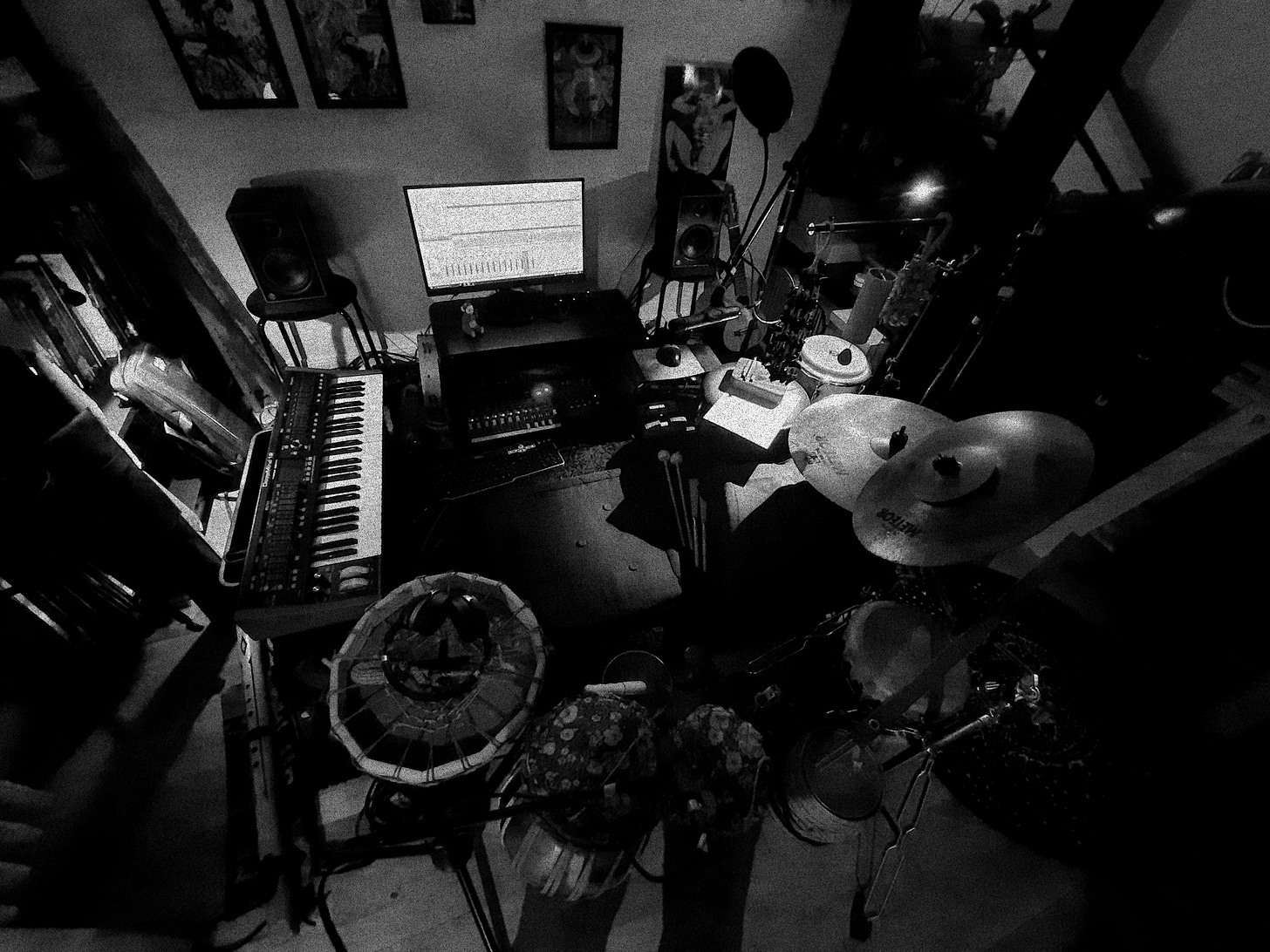In Search of Simonia
I discovered the work of Àltagõr about thirty years ago.
At the time, a friend and I had created a multimedia performance that we were presenting at a festival dedicated to contemporary artistic creations. The program also included lectures, and I decided to attend several of them, eager to broaden my horizons.
One in particular caught my attention. It focused on a multidisciplinary artist with a strange name, active from the 1940s to the 1980s. Poet, musician, performer, inventor… Àltagõr — for it was him — had developed a radical form of art: metapoetry, a type of expression built entirely on imaginary languages and unheard-of phonemes, completely detached from common language.
I remember the immediate fascination I felt. His name was unknown to me, but his work spoke to a part of myself I didn’t yet know how to name. His pursuit of the absolute, his dizzying abstraction, his total refusal of compromise… and above all, this metapoetry — it all struck me deeply. I didn’t yet understand why, or how, but something in it moved me.
And then, one name kept recurring throughout the lecture, like a whisper: Simonia.
At the end of the presentation, I was fortunate enough to obtain a rare copy of issue 61 of the journal Schéma et Schématisation, entirely devoted to Àltagõr and co-written by the speaker himself. I kept it safe. I knew that one day I would return to this universe, that the time would come when I would fully immerse myself in it.
Schéma et Schématisation #61
Àltagõr: The Poet of Forgotten Sounds
Àltagõr, the pseudonym of André Vernier (1915–1992), remains a singular figure of the French poetic avant-garde of the 20th century. Born in Jœuf, in Lorraine, he began working in the mines at age 14, while writing poems and novels. A tireless autodidact, he developed a radically experimental body of work, blending sound poetry, linguistic invention, and instrument-making.
In 1943, he created metapoetry: a form of poetry based on the pure sensations of voice and breath, free from any meaningful language. He invented languages composed of new syllables, built according to their own internal phonetic rules. His performances, often accompanied by instruments he created himself — such as the pantophone or plectrophone — explored the expressive potential of the human voice.
Henri Chopin once said of him: “the only phonetic poet to have constructed an invented language of syllables and imaginary phonemes.”
Simonia: Goddess of Forests and Forms
Among Àltagõr’s major works is Simonia, an epic poem of over 10,000 verses, dedicated to a fictional entity born of his wanderings in the forests of northeastern France. He accompanied readings of this piece with vocal and musical improvisations played on his hybrid instruments.
Simonia is a mysterious and magnetic figure, on the border between the human and the absolute. Goddess, spirit, mutant, transfigured ideal — she embodies both a quest and a revelation.
“Simonia, feline body, tawny hair, prominent forehead, sinuous profile, a smile barely sketched, marked with irony and transhuman spirituality.”
A fleeting presence, she haunts the edges of the imagination like a poetic totem. Simonia is an invocation. A metamorphosis. A constant question: how do you seek Simonia? And more importantly, how do you recognize her?
Simonia by Àltagõr
An Incantatory Quest
As often happens with me, projects are not born of clear intention, but from a sense of unease, a diffuse calling. What is unfolding here isn’t a project — it’s an experiment. And so here I am, thirty years after that first encounter, walking in the ethereal footsteps of Simonia.
Goddess, spirit, enigma… Little by little, a certainty emerges: I must invoke her.
To explore, to fumble, to invent incantations. Words not to explain, but to bring forth. Isn’t that how one addresses divinities?
So here is a first incantation.
Have I found Simonia yet? Of course not. She will not reveal herself so easily.
But I believe I have sensed a vibration, a direction, a quiver.
The beginning of a path.
The path of a Book of Incantations.
Once again, I surrounded myself for this first experiment with my alter-egos: the-e-ghost for the images, and Carmen Ali Cetch for the voices.
The incantation circle…
Simonia – 1st Incantation
ZŪMELAK SORIA
Zū zū ralamina
Trōn-ek talivora sā
Mezzô! Mezzô! Kilarāō
Tzāna velúk, tzāna velúk…
Kermāl irondó
Fe-la-vi, fe-la-vo, fe-la-ven—
Rūtama spirilia dēn
Kha! Kha! Shurabīa tholm.
Voquēra, voquēra…
Noctē dulorum, ezzarāna
Hé! Hé! Grun-tāl sevono
Sā vā sō vūnē lakathō.
Brēda mino shakarē
Pal-tūm dazari qī
Tchī! Tchī! Felo-ni-quō
Quēta-nan, quēta-non…
Lorama vel tī
Marthū kathū kathū—
Entra-mezal, flaridaé
Zū zū zū… *
Zū zū ralamina
Trōn-ek talivora sā…
(la voix retient le vent)
(la gorge glisse dans l’abîme)
(la bouche s’efface)
Zū zū zū…
zū
zū
zū zū
zū
zū zū
zū zū zū
zū zū zū zū
zū zū zū zū zū zū















Share this post